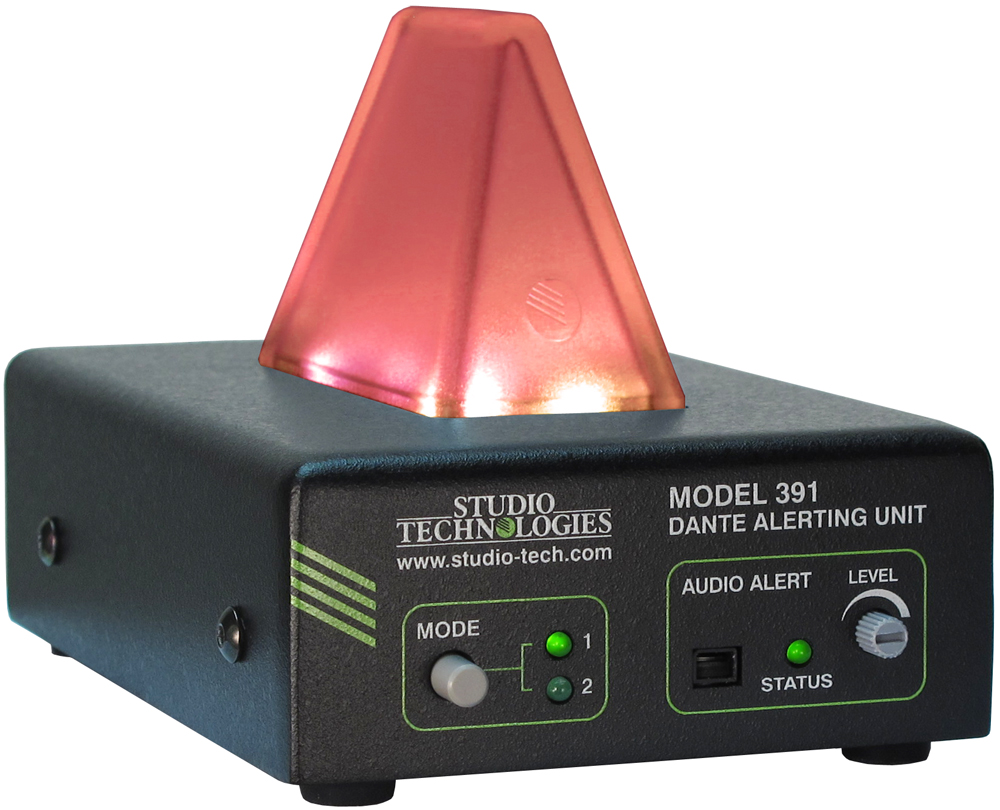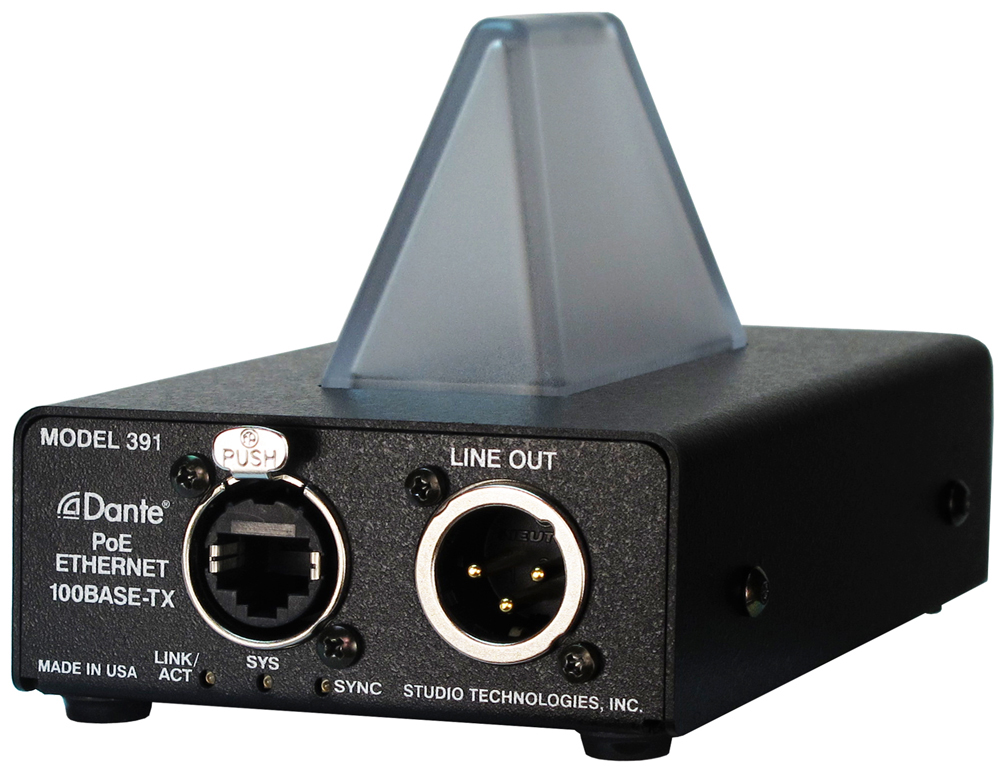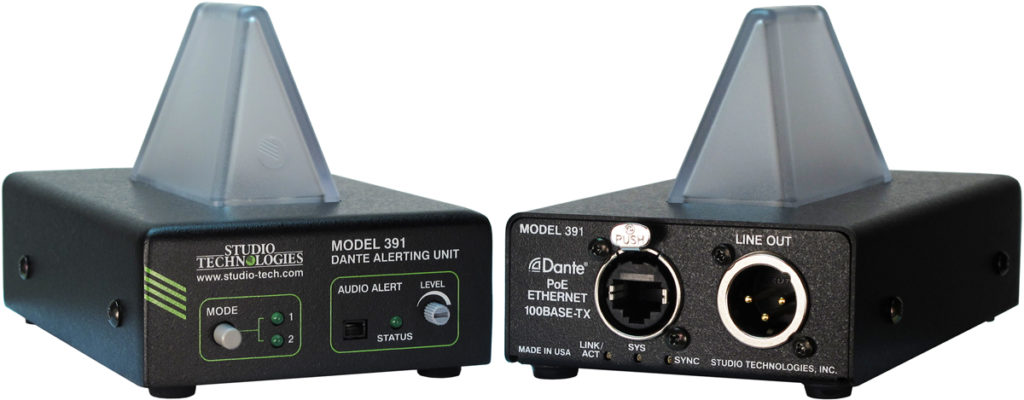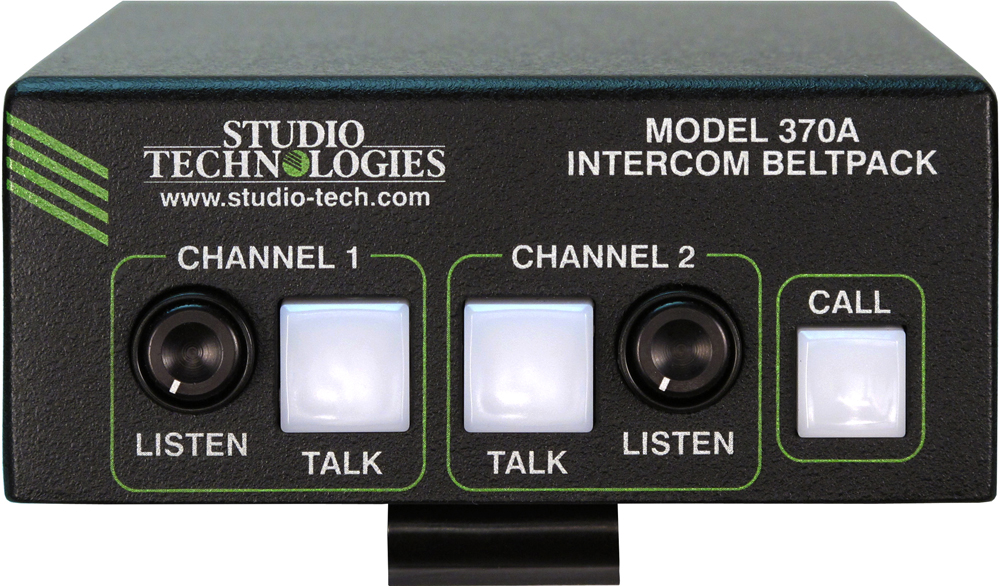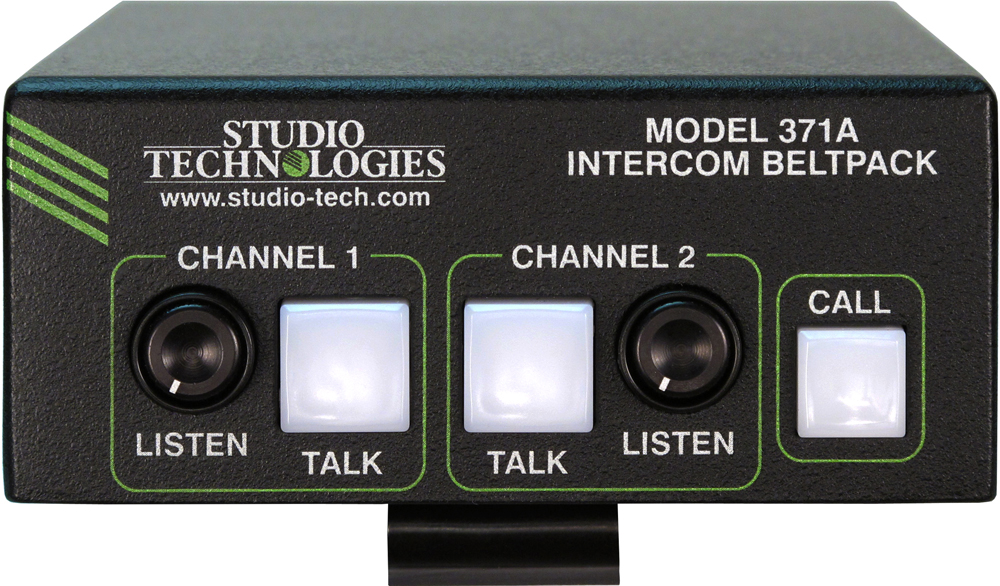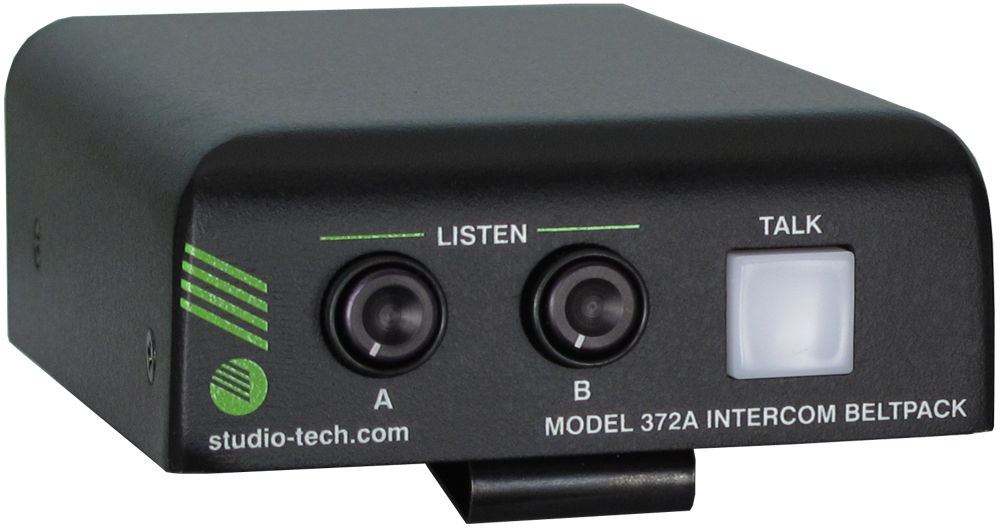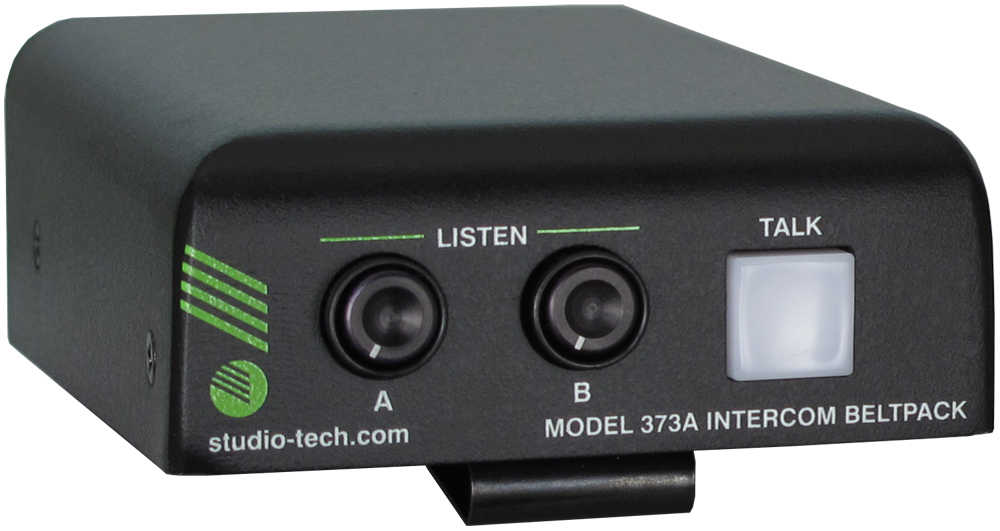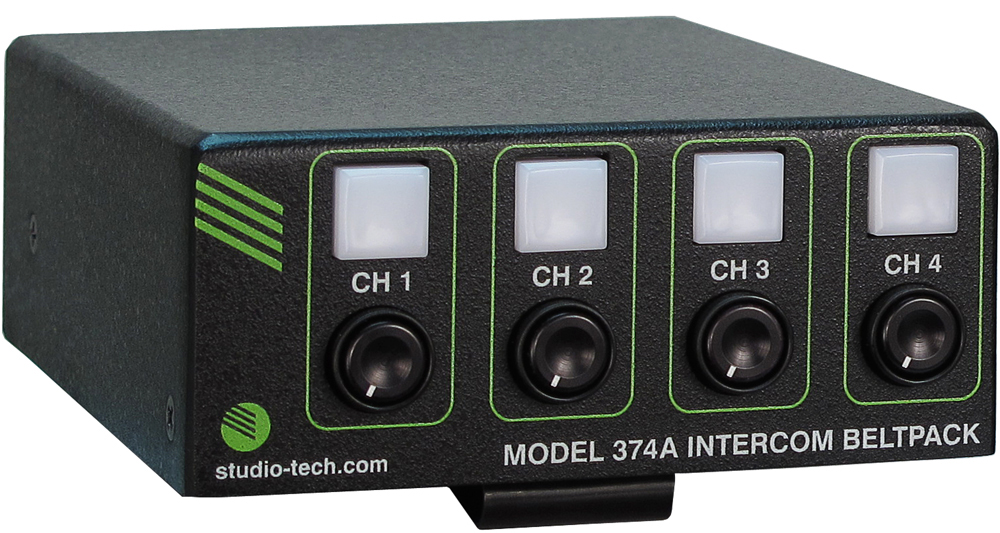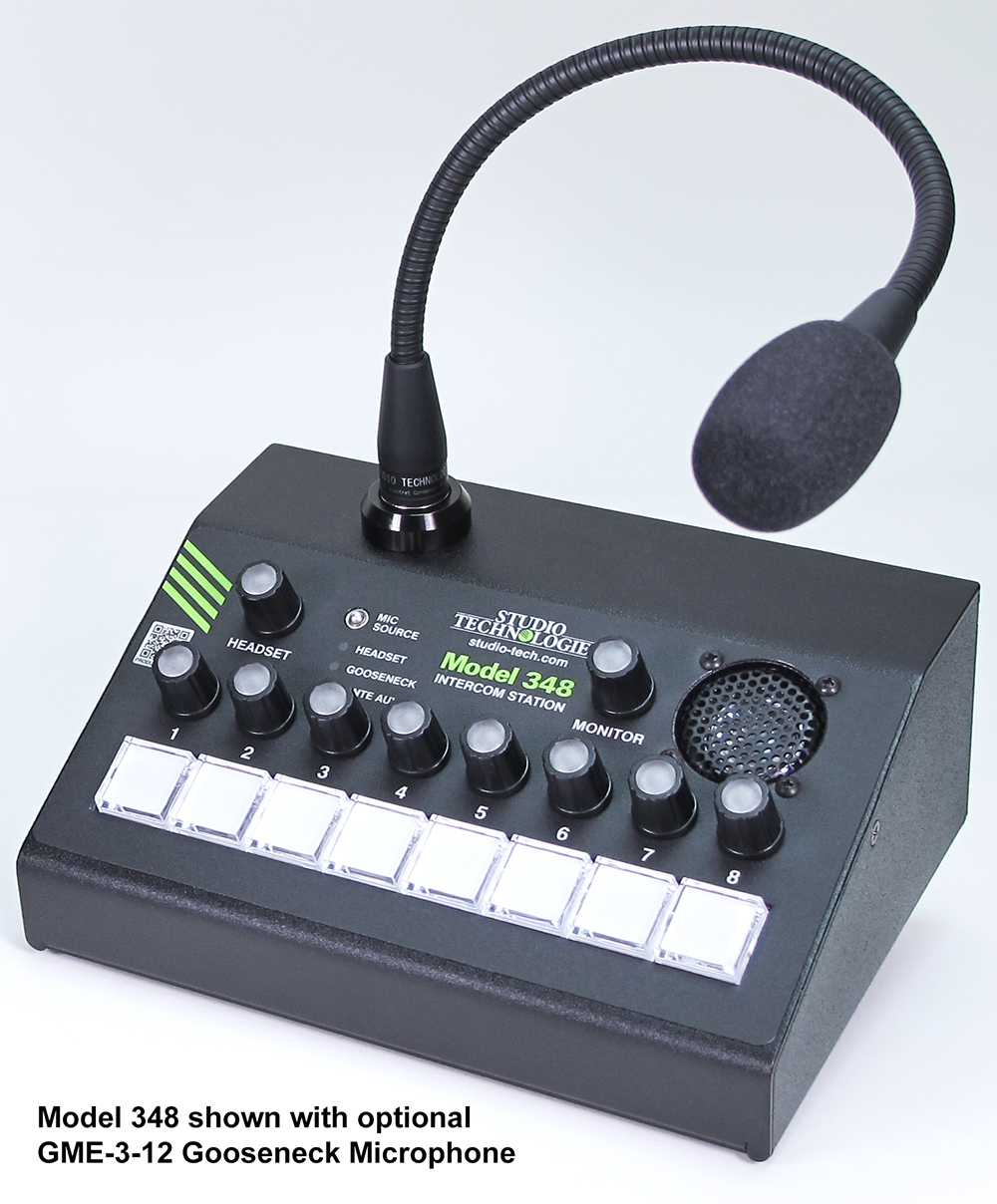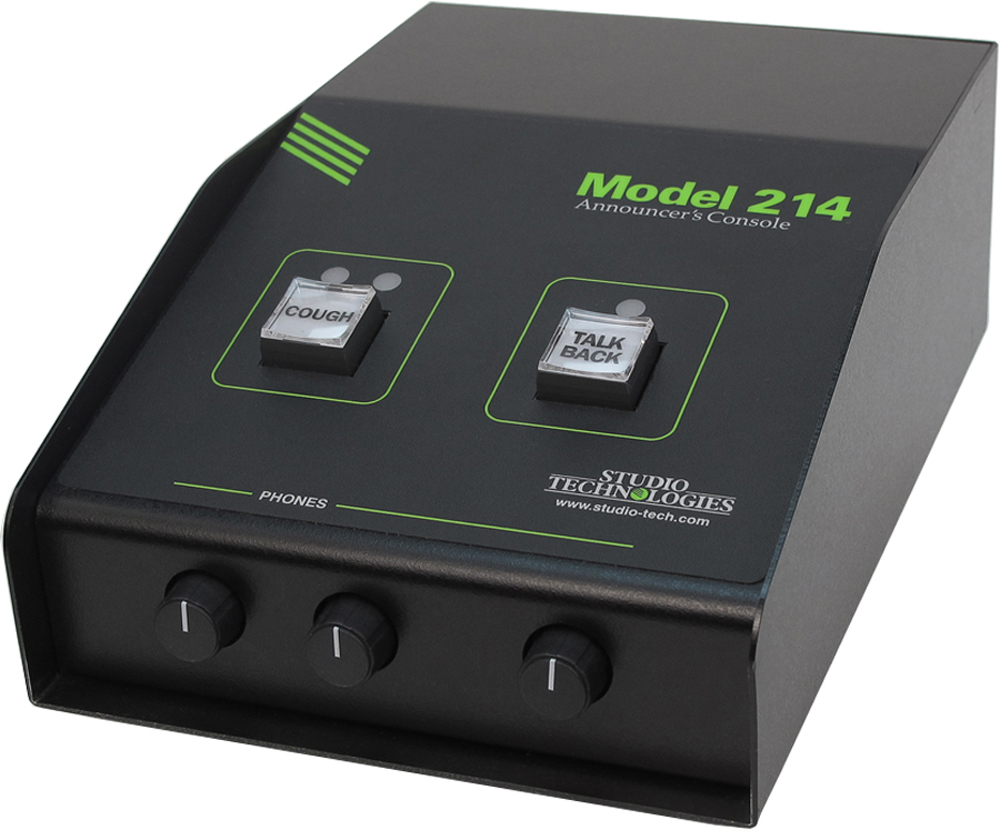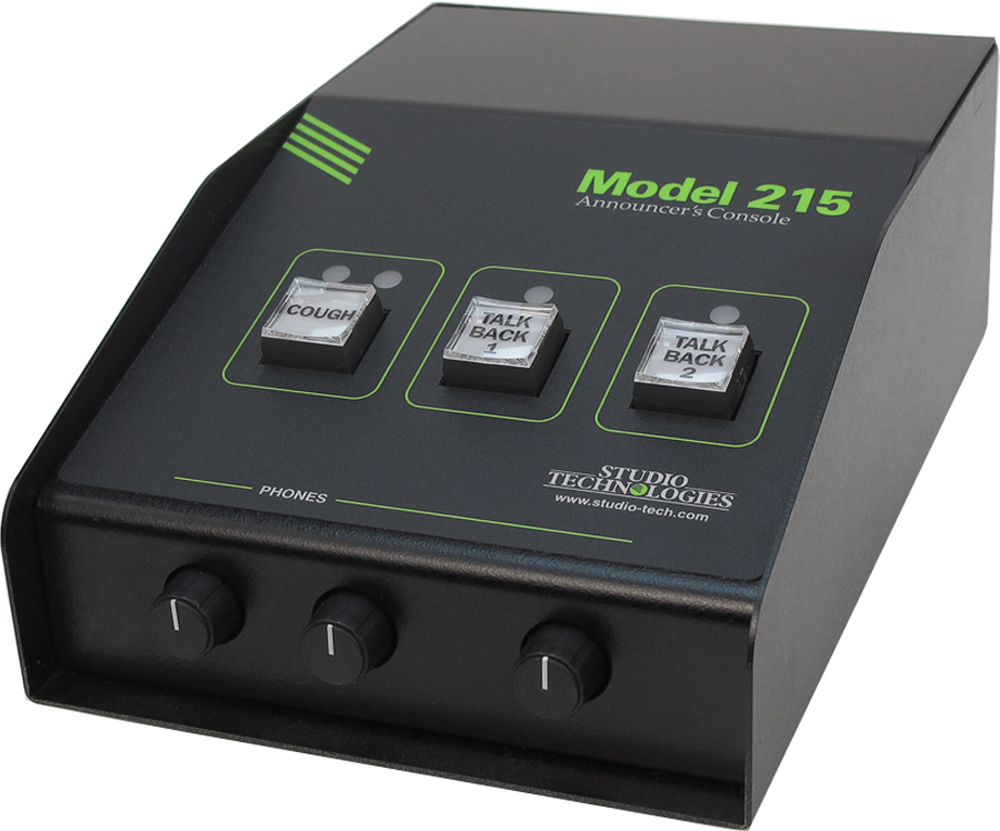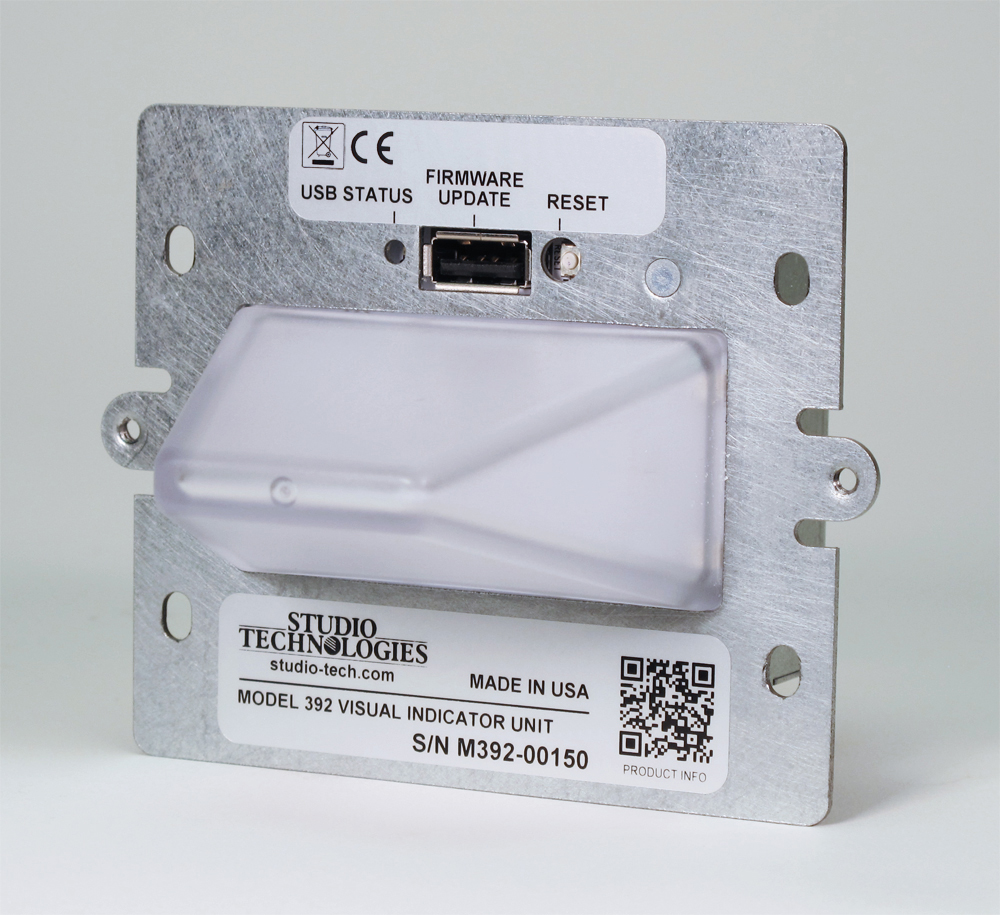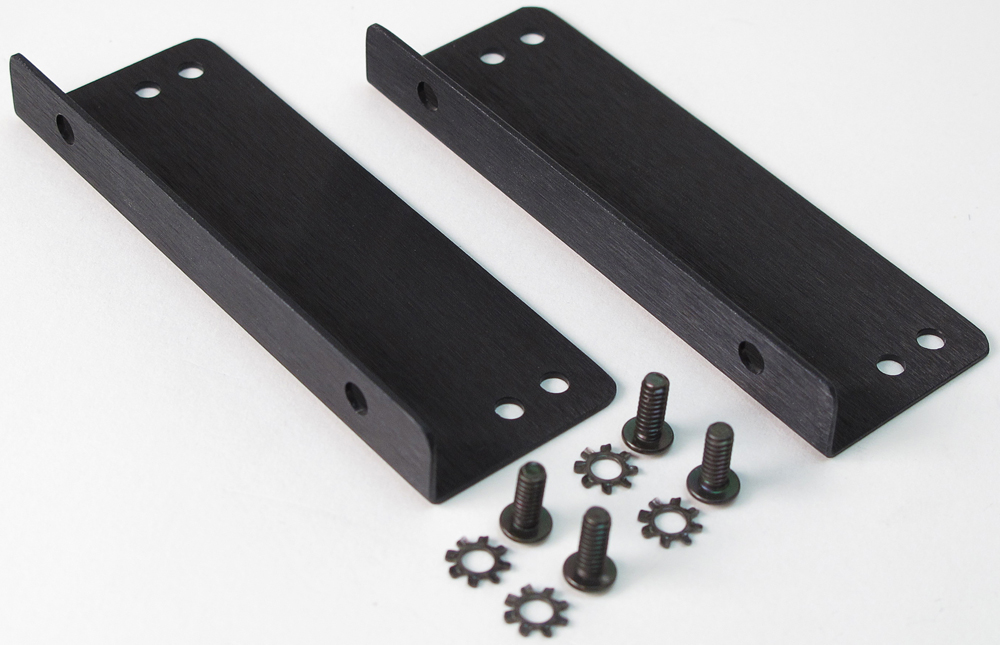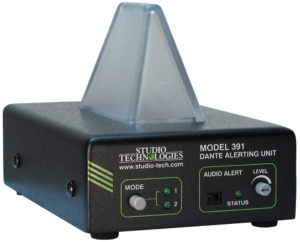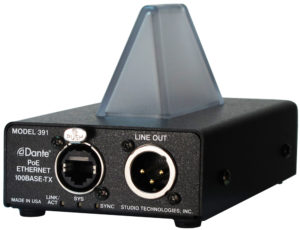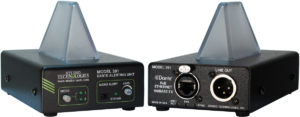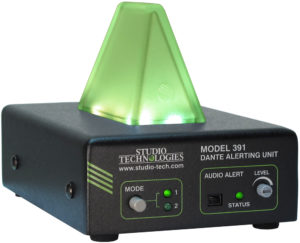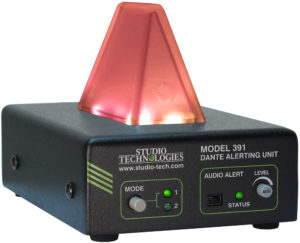The Model 391 Dante® Alerting Unit builds on the limited capabilities of the "beacon" or "strobe" devices that are ubiquitous with analog party-line (PL) intercom systems and adds a broad range of new and enhanced features. The Model 391 responds to audio "call" signals that are present in the unit's Dante audio input channels. With an 18-23 kHz detection range, it will detect tone call signals that are commonly utilized in both legacy analog and modern digital PL intercom circuits.
Upon detecting a call signal the Model 391 can provide a visual indicator, enable an audio sounder output, and even activate an analog line output. Each of the Model 391's alerting resources can be individually optimized to meet the unique requirements of many applications. The STcontroller personal computer application is used to select from a wide range of operating choices. The compact, portable unit is compatible with Dante audio-over-Ethernet installations and requires only an Ethernet connection with Power-over-Ethernet (PoE) capabilities for operation. Typically, applications will find the Model 391 applicable for use in theater, sports, and broadcast facilities.
The Model 391 is directly compatible with the call signals generated by the popular Studio Technologies' Dante-enabled beltpacks and intercom stations. These Dante-connected user devices generate 20 kHz tones whenever their call button is pressed. Model 391 applications can also employ the Studio Technologies' Model 45DC or Model 45DR Intercom Interface units to provide compatibility with legacy analog PL intercom systems. The Model 45DC is compatible with Clear-Com® PL circuits that use a DC voltage to indicate call activity. The Model 45DR supports the TW-series PL intercom circuits from RTS® which directly use 20 kHz tones for call activity. Both interfaces will convert the associated analog PL circuit's audio and call signals to Dante digital audio. Once in the Dante "world" the call signals and user audio is compatible with the Model 391 Dante Alerting Unit as well as user beltpacks such as the Model 370A, Model 371A, and Model 374A. In addition, the Model 348 and Model 5304 Intercom Stations can send and receive compatible call signals.
Applications
The most-typical application for the Model 391 is to alert users that a call signal on an intercom channel is active. Some technicians and engineers associated with theater, entertainment, and corporate events won't always stay "on headset" and may need to be alerted when their presence on the production's intercom system is needed. As an example, a front-of-house audio mixer could find value by placing a Model 391 unit on their audio console or associated equipment rack. They would then be able to quickly respond to an intercom call request while not having to continuously wear a headset that would interfere with their normal work.
The Model 391 can also be used as a general-purpose status indicator for various live-event applications. Instead of responding to intercom call signals, the STcontroller application can be used to select the real-time action of the visual indicator, audio sounder, and line output. For example, a Model 391 placed in a theater's "green room" could provide a visual "quiet on the set" indication.
This might be useful to provide an on-air or program audio feed to inputs on various pieces of audio equipment. The line output can also be configured to be active only when a call signal is present. This could serve as a paging output or allow an audio call function to be implemented.
In addition to responding to intercom beltpack call requests, the Model 391 can also be used in many other applications. These include allowing one of the contact closure inputs on a Studio Technologies' Model 44D Interface to trigger the alerting functions on a Model 391. Being Dante networked audio devices, the units will function together as long as they are located on same network, whether the devices are in the same room or on the opposite sides of a university campus. The Model 391's analog line output offers a unique resource. It can be configured as an always-active output that follows one of the audio inputs associated with the Model 391. Additionally, signals generated by other products, such as the Studio Technologies' Model 214 and Model 215 Announcer's Consoles, will allow the Model 391 to serve as a broadcast "on-air" indicator.
Features
For visual alerting the Model 391 incorporates a trapezoidal-prism-shaped polycarbonate lens with multiple red/green/blue (RGB) LEDs. The unit is typically placed on an audio console, lighting board, or on top of an equipment rack. The visual indicator provides a highly visible 360-degree viewing field. Configuration choices allow selection of the exact color, intensity, and lighting cadence. Another selection determines what action will cause the LEDs to activate. It can respond to a call signal or can remain enabled as a status indication. This allows the Model 391 to be used in a variety of alerting applications, ranging from a request to join an intercom conversation to providing a "rehearsal in progress" or "closed set" indication.
A configuration choice allows call signals to be simultaneously detected on audio input channels 1 and 2. Unique colors will be displayed in response to a call signal on channel 1 versus a call signal on channel 2.
The Model 391 includes an audio sounder whose output will "cut through" ambient audio to gain the attention of nearby personnel. The character of the sounder was selected to be effective at gaining attention rather than being pleasant. The overall level range of the sounder can be configured while the precise value can be set by the user by way of a rotary potentiometer. The action of the sounder can be configured from among multiple choices, including continuous, beep, and pulse. A delay can also be selected so that the visual indicator can activate first while the sounder will enable only after the selected period of time has elapsed. This could help prevent users from being annoyed by the sounder if they are able to quickly respond to the visual alert.
A unique Model 391 feature is the line output. Interfaced using a standard 3-pin XLR audio connector, the balanced analog line-level output signal is compatible with inputs on devices such as audio consoles and amplified speakers. A configuration choice allows the on/off status of the line output to be selected. One choice designates that the line output be active only when a call signal is received. This allows voice signals to be provided to users simultaneously with visual and sounder activation. The line output can also be configured to be continuously active, acting as a general-purpose analog output signal from either of the two Dante input channels.
The Model 391 provides two operating modes, each with a fully-independent operating configuration. A pushbutton switch and two associated LED indicators on the Model 391's front panel allows observation and selection of the desired operating mode. By allowing two independent configurations the Model 391 can offer two unique sets of application-specific alerting conditions. As an example, Mode 1 might be considered a "rehearsal" mode where both a bright visual indicator and a loud sounder output are desired whenever a call signal is received. Mode 2 could be configured as a "performance" mode and enabled whenever an event is actively taking place. The configuration for this mode might have the audio sounder disabled and the intensity, color, and action of the visual indicator selected to be unobtrusive.
Dante Audio-over-Ethernet
Audio and related data is sent to the Model 391 using the Dante audio-over-Ethernet media networking technology. As a Dante-compliant device, the Model 391's two input (Dante receiver) audio channels can be assigned (routed) from source devices using the Dante Controller software application. The Model 391 is compatible with Dante digital audio sources that have a sampling rate of 48 kHz and a bit depth of up to 24. Two bi-color LEDs provide an indication of the Dante connection status.
Ethernet Data and PoE
The Model 391 connects to an Ethernet data network using a standard 100 Mb/s twisted-pair Ethernet interface. The physical interconnection is made by way of a Neutrik® etherCON® RJ45 connector. While compatible with standard RJ45 plugs, etherCON allows a ruggedized and locking interconnection for harsh or high-reliability environments. An LED displays the status of the network connection.
The Model 391's operating power is provided by way of the Ethernet interface using the 802.3af Power-over-Ethernet (PoE) standard. This allows fast and efficient interconnection with an associated data network. To support PoE power management, the Model 391's PoE interface reports to the power sourcing equipment (PSE) that it's a class 1 (very low power) device. If a PoE-enabled Ethernet port can't be provided by the associated Ethernet switch a low-cost PoE midspan power injector can be utilized.
Setup, Configuration, and Operation
Setup, configuration, and operation of the Model 391 is simple. An etherCON RJ45 jack is used to interconnect the network interface with a standard twisted-pair Ethernet cable associated with a port on a PoE-enabled network switch. This connection provides both network data and power. A 3-conductor XLR connector provides access to the analog, electronically balanced line output. The Dante Controller personal computer application is used to route ("subscribe") one or two audio sources to the Model 391's inputs.
All Model 391 features are configured using the STcontroller personal computer software application. An extensive set of parameters allows the unit's operation to be tailored to meet the needs of many applications. STcontroller, compatible with version 7 and later of the Windows® operating system, is a fast and simple means of confirming and revising the unit’s operating parameters.
A pushbutton switch is used to select the operating mode. A rotary potentiometer ("pot") makes it easy for the user to set the level of the audio sounder. Three status LEDs provide a clear indication of the unit's operating mode and alerting status. The Model 391's compact enclosure is made from steel, whose mass that helps to keep it stable at whatever location it is deployed.
Future Capabilities and Firmware Updating
The Model 391 was designed so that its capabilities and performance can be enhanced in the future. A USB connector, located on the unit's main circuit board (underneath the unit's cover), allows the application firmware (embedded software) to be updated using a USB flash drive.
To implement the Dante interface the Model 391 uses Audinate's Ultimo™ integrated circuit. The firmware in this integrated circuit can be updated via the Ethernet connection, helping to ensure that its capabilities remain up to date.

